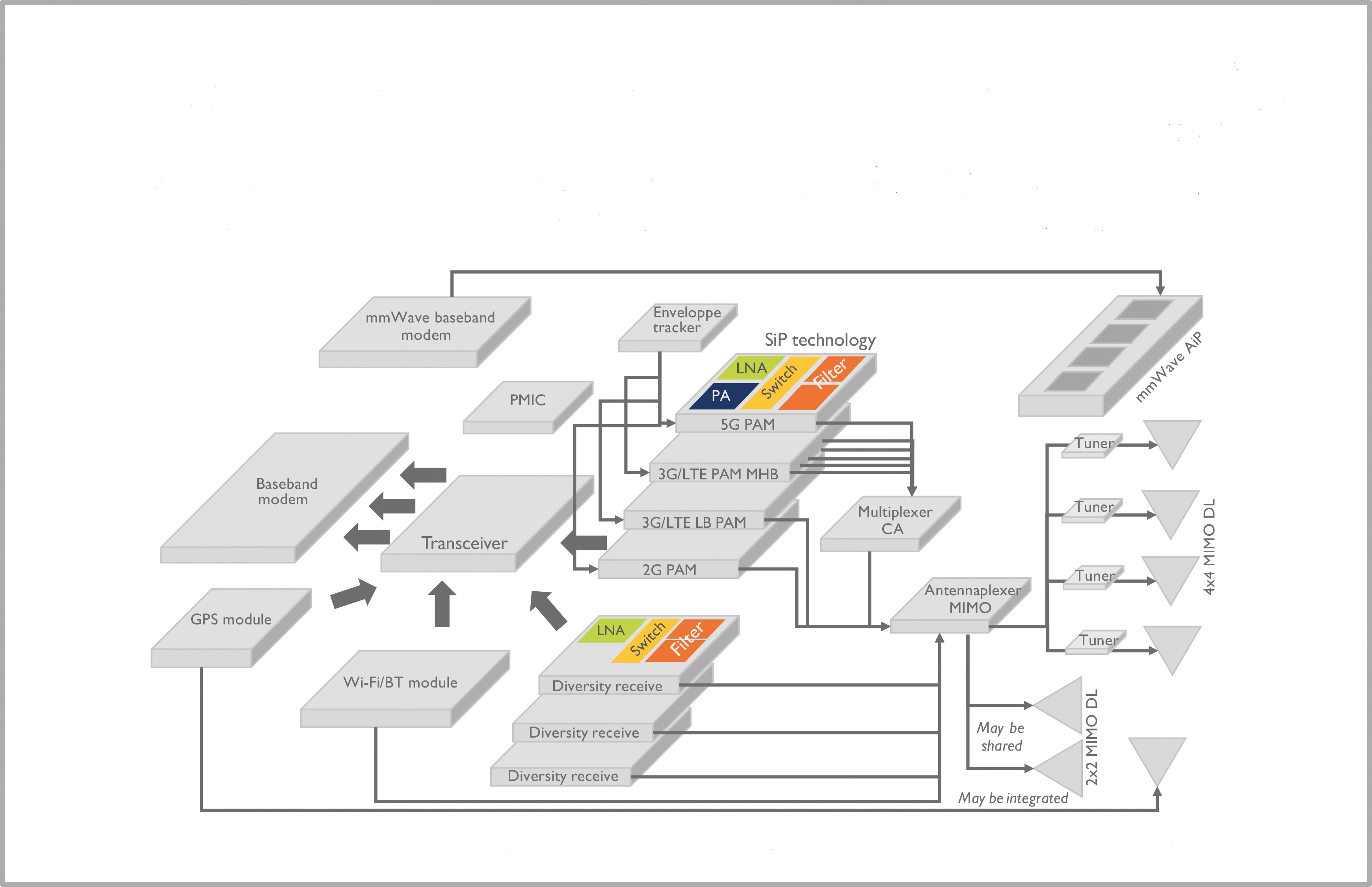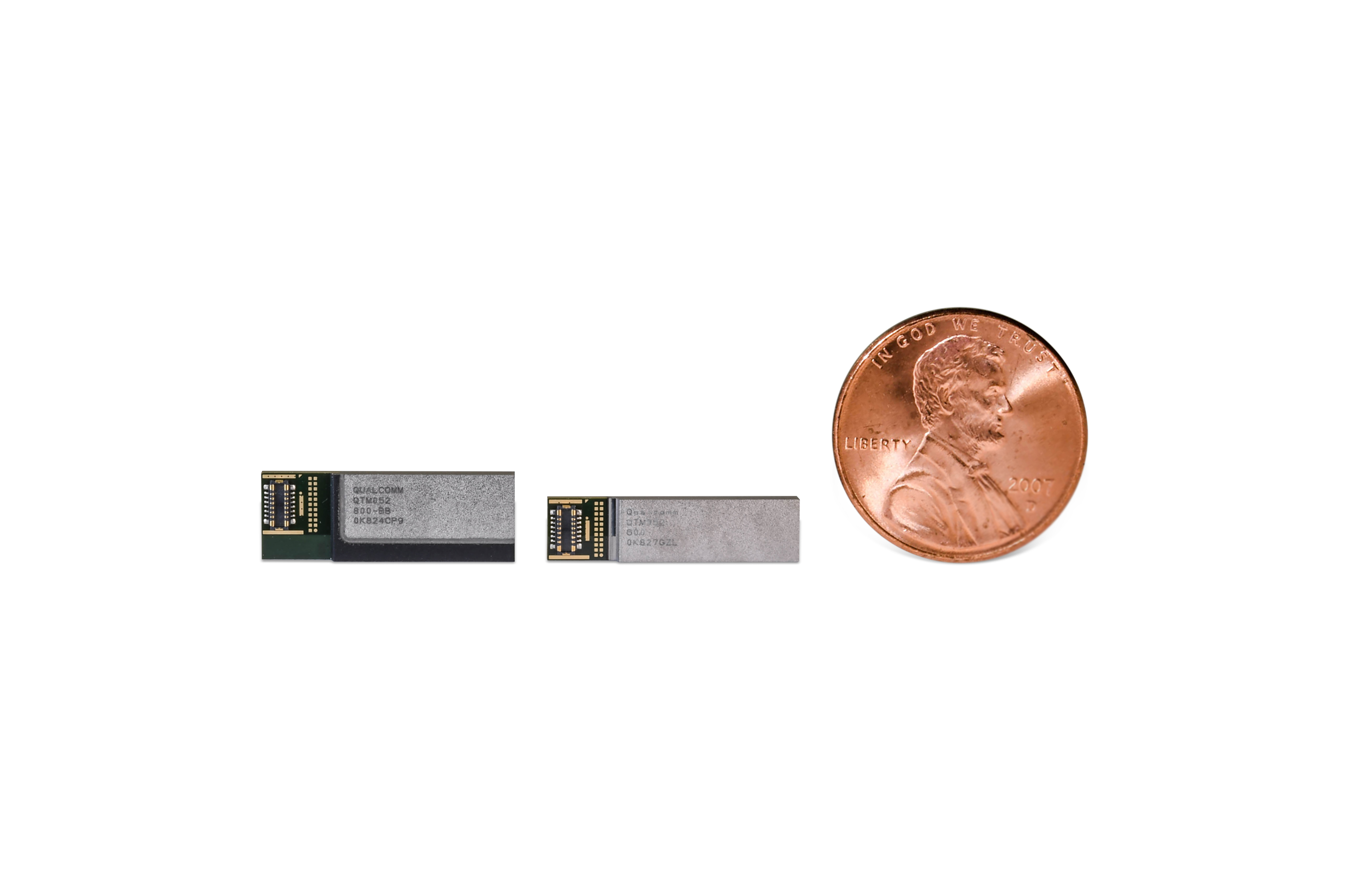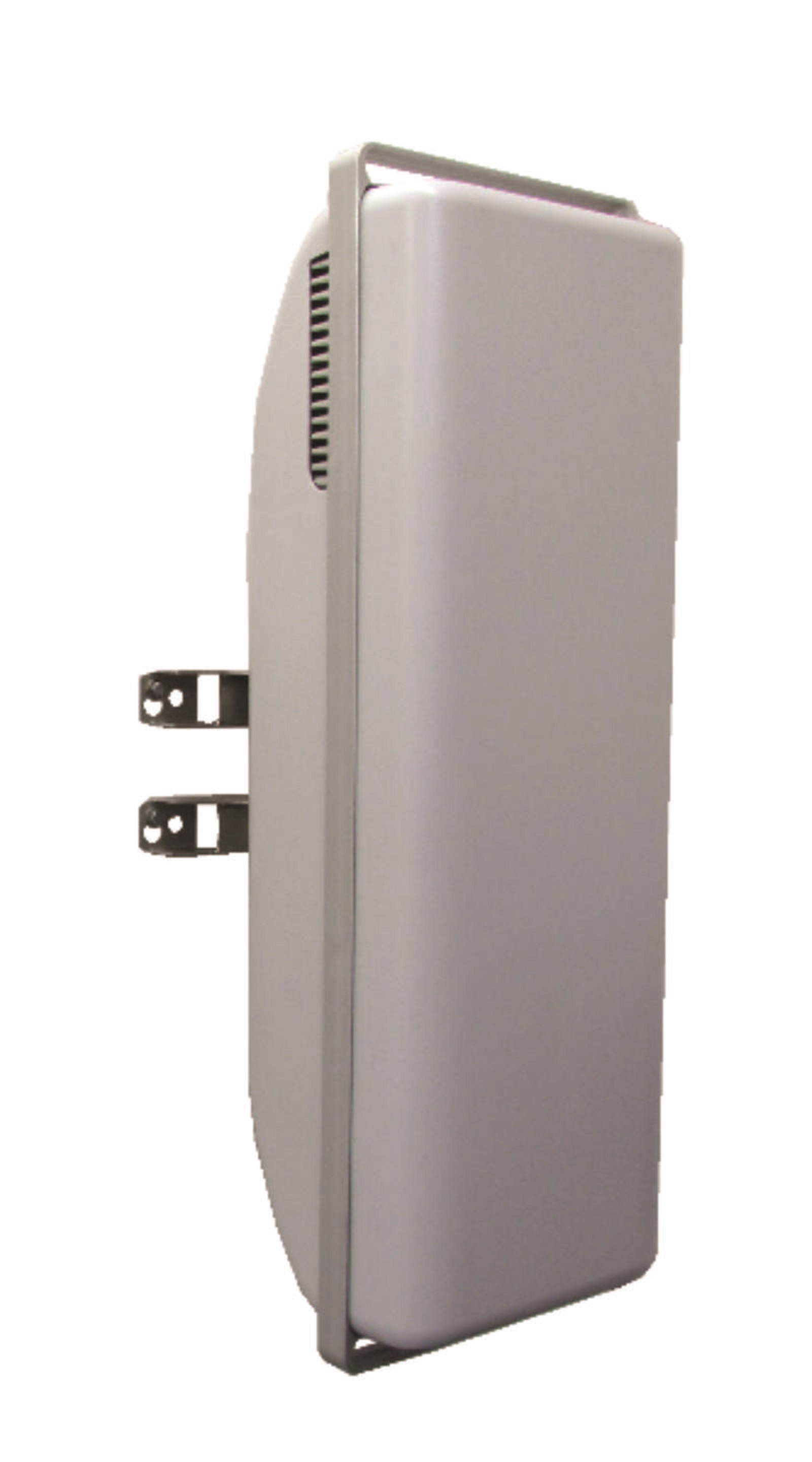By Majeed Ahmad, contributing writer
The RF front end (RFFE) is becoming increasingly complex in 5G designs due to the growing number of frequency bands. Subsequently, more antennas are required to deliver higher data rates while they implement carrier aggregation (CA) and multiple-input, multiple-output (MIMO) technologies and millimeter-wave (mmWave) frequency bands.
Not surprisingly, therefore, we are witnessing a higher level of component integration in 5G antenna and RF front-end modules. These modules are ramping up integration to drive additional RF content in multi-band 5G communications.

A view of the mmWave RF front-end structure for 5G device designs. (Image: Yole Développement)
This article will show how the 5G wireless revolution is transforming antenna hardware and its interface to RF front-end designs. It will explain key technology drivers like antenna tuning and provide an insider’s view on smart antenna systems on the cusp of commercial realization. Let’s begin with active antenna systems (AAS) used in 5G base stations.
Active antenna systems
The technological complexity of 5G antennas is very high for cellular and mmWave spectrum bands. That’s mainly because 5G designs utilize multiple antenna modules in an array, and signals are concentrated in multiple directions. At the same time, however, it’s imperative that designers improve signal efficiency while also reducing antenna size and power consumption.
This is especially required when 5G networks transmit large amounts of data using the extremely high-frequency mmWave bands spanning from 28 GHz to 39 GHz. In mmWave communications, it’s challenging to transmit wireless signals very far due to short wavelengths and high directionality, and that’s primarily why 5G antenna modules are incredibly complex.

The coin-sized 5G radio modules include an RF transceiver, RF front end, power management IC, and phased antenna array. (Image: Qualcomm)
Therefore, chipmakers like NXP Semiconductor are trying to simplify massive MIMO (mMIMO) deployments by enabling smaller and lighter active antenna systems with multi-chip modules (MCM) that facilitate higher levels of integration. NXP’s smart antenna solutions leverage the company’s SiGe technology to build phased-array antenna systems for mmWave communications.
These active antenna systems feature highly integrated analog beamforming to ensure substantial bandwidths for both sub-6-GHz mMIMO and early mmWave networks. In other words, the AAS solutions cater from milliwatts to kilowatts of signal power for frequency spectrums ranging from sub-6 GHz to 40 GHz.
Active antenna systems complement 5G spectrum efficiency by incorporating several antenna elements into a compact antenna structure. They also employ vertical sectorization to better manage radiation pattern control and adapt to the constantly changing situations in ultra-fast 5G networks.
Take the example of an AAS solution from Integrated Device Technology (IDT). It encompasses interface amplifiers, low-noise amplifiers (LNAs), switches, and pre-drivers to address the transmit and receive requirements of mMIMO communications in ultra-compact form factors. IDT’s AAS solution features amplification, gain control, and protection needed for multiple antenna elements in the transmit and receive chains.
5G antenna tuning
Another critical design consideration for RF designers is antenna tuning that optimizes radio performance across a broad frequency range. In 5G designs, antenna tuning is more important than ever because more antennas must fit into less space to maximize over-the-air capacity. Antenna tuning, for instance, can recover some of the lost radio performance.
There are two types of antenna tuners. Aperture tuners optimize the antenna terminal’s free space and thus improve transmit and receive communications as well as total isolation sensitivity (TIS). On the other hand, impedance tuners minimize mismatch loss between the antenna and RF front end, thereby helping to compensate for the environmental effects.
Besides the rise of the number of antennas, antenna tuners are crucial amid the increasing signal processing complexity in 5G systems. Specifically, when handsets are implementing 4 × 4 MIMO signals in the New Radio (NR) standard, antenna tuning can play a vital role in maintaining smartphone power efficiency and battery life.
The new bezel-less smartphones integrate four to seven antennas to support 5G data rates, compared to two to four antennas in the present 4G handsets. To address this increase in antenna count, Skyworks has released the wideband 16-state antenna aperture tuners that cover bandwidths from 600 MHz to 6 GHz for LTE Advanced Pro as well as emerging 5G standards.
Qualcomm has also launched the QAT3555 Signal Boost adaptive antenna tuner to address the growing number of antennas and subsequently ensure support for multiple frequency bands. It supports 6-GHz bands while featuring a 25% decrease in package height and signal loss compared to the previous-generation antenna tuner.
Commercial 5G antennas
As the above product examples show, commercial antenna solutions targeting 5G design conundrums have started to reach the market. Take, for instance, a more specialized area in 5G antenna designs that relates to indoor coverage.
Here, Laird Connectivity, a supplier of wireless modules and antennas, has unveiled an indoor MIMO ceiling-mount antenna that operates from 698-MHz to 960-MHz and 1,300-MHz to 4,200-MHz frequency bands. The CMD69423P is a two-port MIMO antenna that is specifically designed for indoor environments like corporate offices, retail malls, medical facilities, bus terminals, and train stations.
Laird claims that the antenna elements in the CMD69423P are designed with linear, vertical, and horizontal components and are thus optimized to radiate in a specifically shaped pattern when installed on a ceiling. Moreover, the robust radiation performance of this omnidirectional ceiling-mount antenna translates into a low correlation between ports.

Nokia’s AirScale active antennas deliver mMIMO streams on two bands simultaneously. (Image: Nokia)
Nokia also claims to have developed RF IC-based mMIMO antennas that are easier to deploy and are cheaper and smaller compared to conventional mMIMO antennas. Nokia’s AirScale active antenna for mMIMO applications, for example, uses 64 transmit and 64 receive antenna elements while delivering the output power of 320 W.
It’s imperative to keep size, weight, and power consumption in check for mMIMO antennas tasked to facilitate a massive amount of wireless bandwidth. Additionally, optimizing multiple antenna elements can be extremely complex because of heat dissipation in compact antenna hardware.
So Nokia has joined hands with mobile operator Vodafone to conduct extensive simulations around its mMIMO active antenna solutions and demonstrate their merits against radio solutions that use passive antennas and remote radio heads.
The availability of commercial solutions shows that the antenna hardware is ready to serve the 5G revolution along with the rest of the RF front-end solutions. Furthermore, like other RF front-end building blocks, antenna designs have attained a higher level of integration that is vital in extremely complex 5G designs.
At a time when commercial 5G is starting to move toward gradual deployments, watch out for where antenna capabilities stand in terms of their support for this huge engineering challenge. For instance, in addition to radio performance, carefully examine if the 5G antennas meet stringent linearity demands and address size and power constraints.
Advertisement





